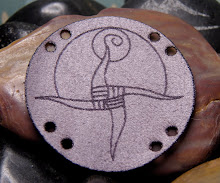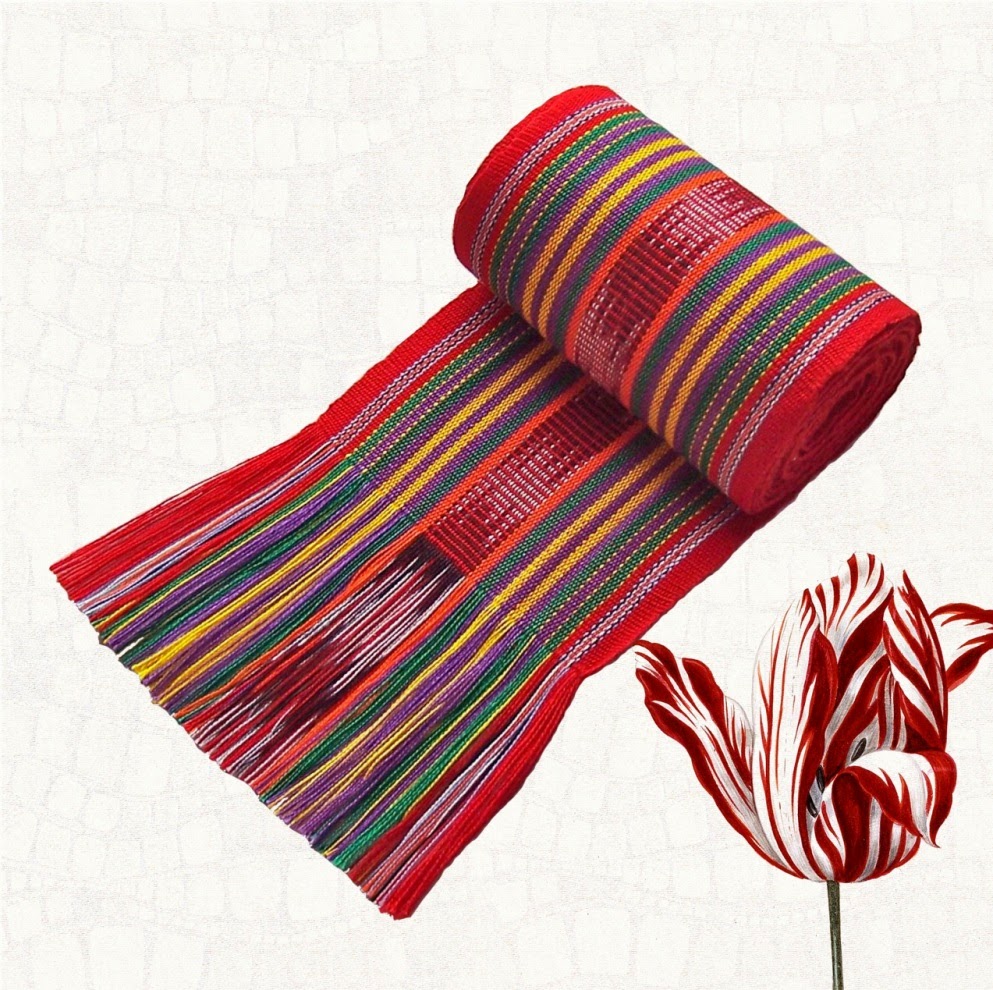
In a recent interview with Celestecraft I was asked about the origins of the Guatemalan sashes which I use on the Brizel's Silk Tapestry Hip Pouches and also sell in my Etsy supply store...
"When I discovered Las Manos, they were going out of business so I did not get the opportunity to get involved with them. I simply arrived at the right place and time and later on became the custodian to 80 different rolls of hand-woven sashes.
I had no idea at the time what I would do with them. I just knew that they needed to ‘come live with me’ until i could figure it out. I fell deeply in love with them and began immediately to share them with the world.
I personally became fascinated with their color, motif and started buying books about Guatemalan textiles. I came across an article in one of the books that addressed the spiritual aspects of weaving and everything clicked into place for me. Once I had finished cataloging the sashes, i realized soon after that the sashes needed to be synthesized with my Silk Tapestry Hip Pouches."
That is the simple version of the story... the full version is much more complex and for a change those details are not important to mention.

Las Manos was a store that specialized in Fair Trade Goods and they worked directly with the weavers and commissioned them to hand craft these beautiful textiles.
When I catalogued the sashes that I had acquired... I counted 80 different ones. The sashes were woven in one warp length... what divides one sash length from the next is a double long fringe that needs to be cut. I'm not sure what the original diameter of the rolls were but I love the way they were stored... in a spiral dense roll.

Each roll, by the way, came with the weaver's family name on it. After studying them closely I noticed that some had identical designs but in different colors... these similarities were almost always created from within the same weaving family.


"In Guatemala, this type of traditional Mayan belt is still worn today- sometimes the only remnant of the native costume worn by men. Women, on the other end of the spectrum, have kept to traditional wear much more passionately.
Sashes- called Bandas (men’s) and Fajas (women’s) can range from thin to wide, plain to colorful, striped- with or without plaids, to intricate brocaded designs. Wound around the waist several times- often holding up either pants or skirts- men’s sashes are tied at the bellybutton, the ends allowed to tangle in front; women usually wind theirs and tuck the ends to the side or at the back. Tradition varies by region- style, color, pattern, tying methodology. Nothing is haphazard.
Weaving is a spiritual tradition- affirming connection with the Gods- bringing myth and prayer into physical manifestation."

Guatemalan sashes, generally speaking, are the weaving product of a back strap loom. This is a very basic loom which warp strings are tied to a tree on one end... and at the other end has a length of wood and a fabric seat. The weaver sits at this end, holding the tension on the warp strings whilst weaving.
In that spiritual tradition, the warp strings represented the umbilical cord between the divine and the individual... and the tree was 'the' tree of life.

What strikes me the most is how much this ancient crafting culture resonates with how I have come to craft my own work. Everything has meaning and is done with a spiritual consciousness. To me this is the essence of celebrating life...
Blessed be !



















No comments:
Post a Comment
Please leave a positive comment :)
I shall publish it as soon as i read it...
THANKS for visiting !